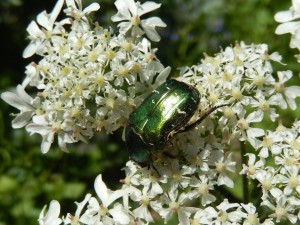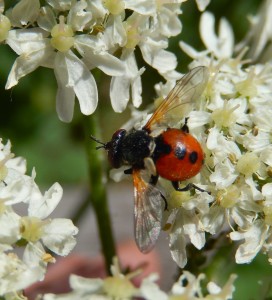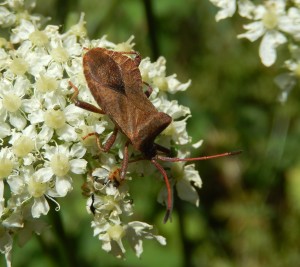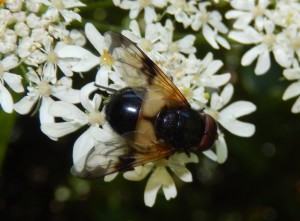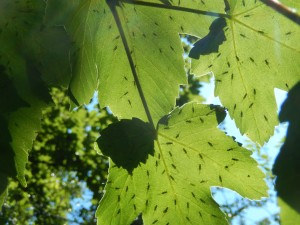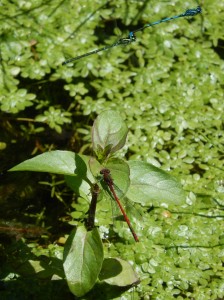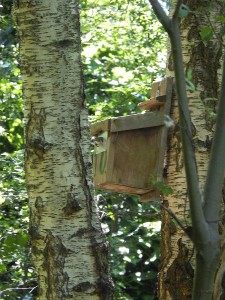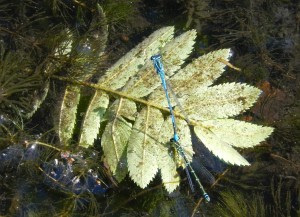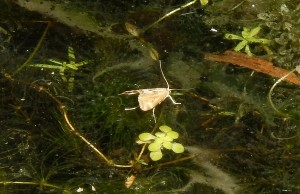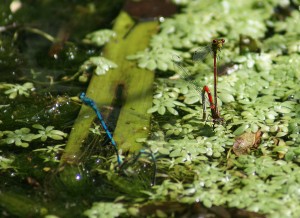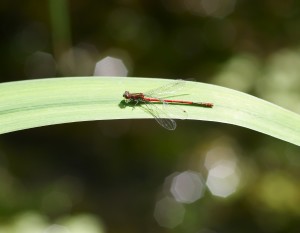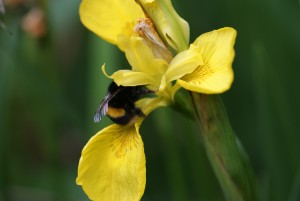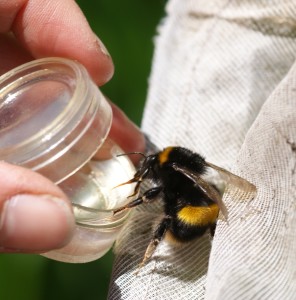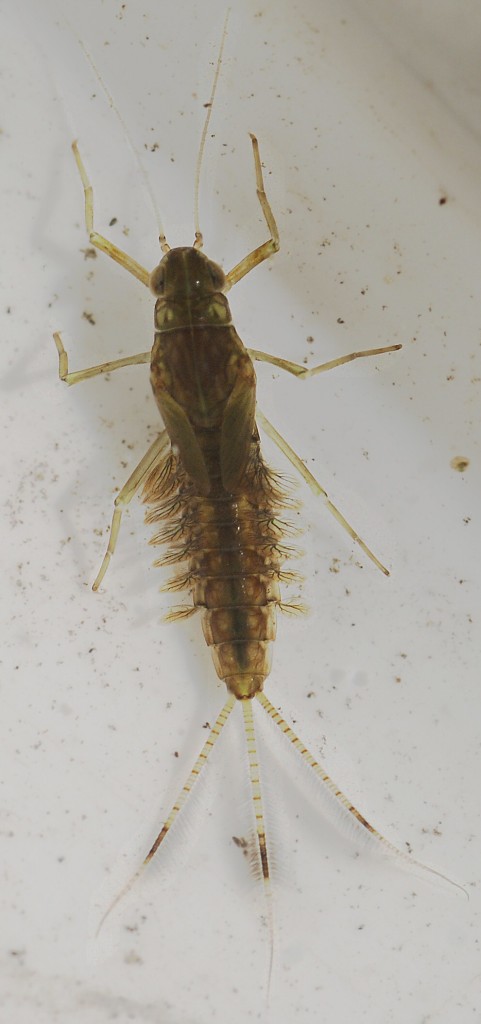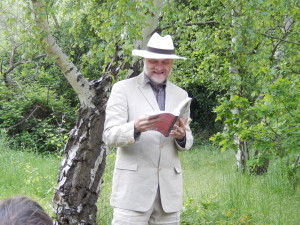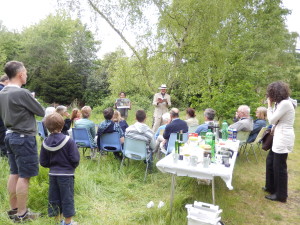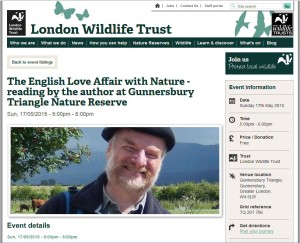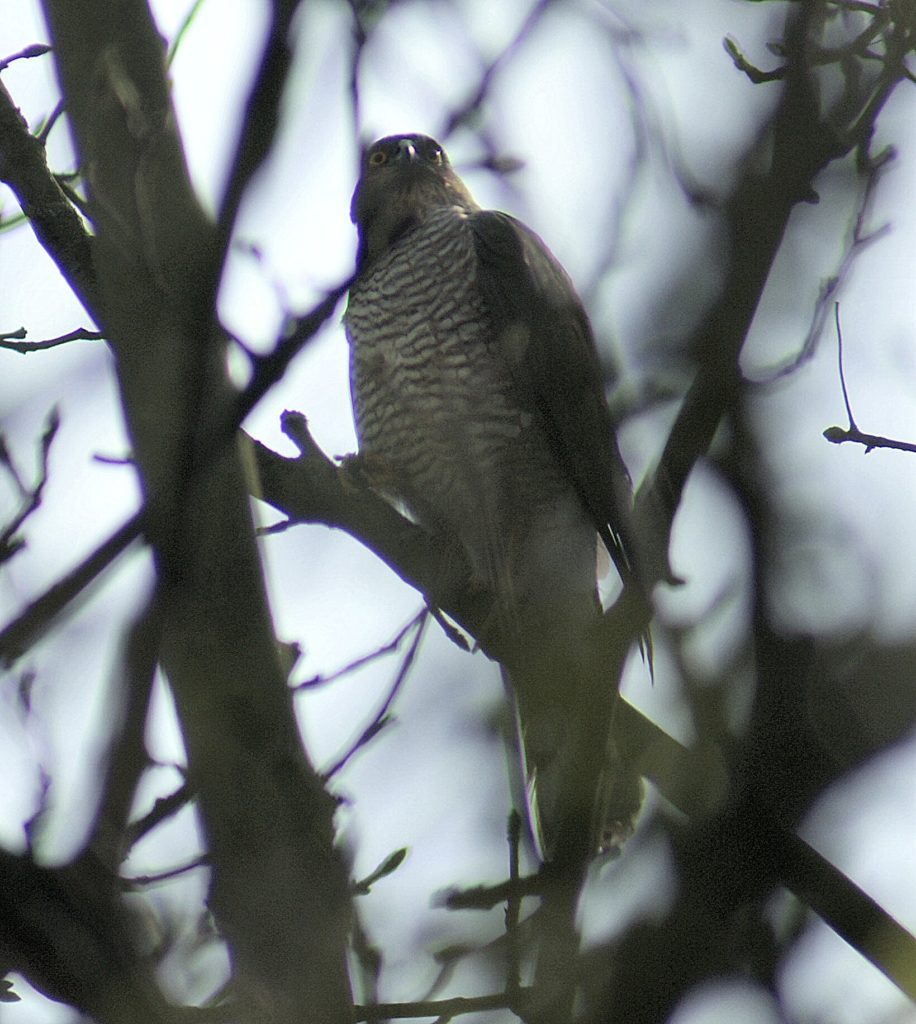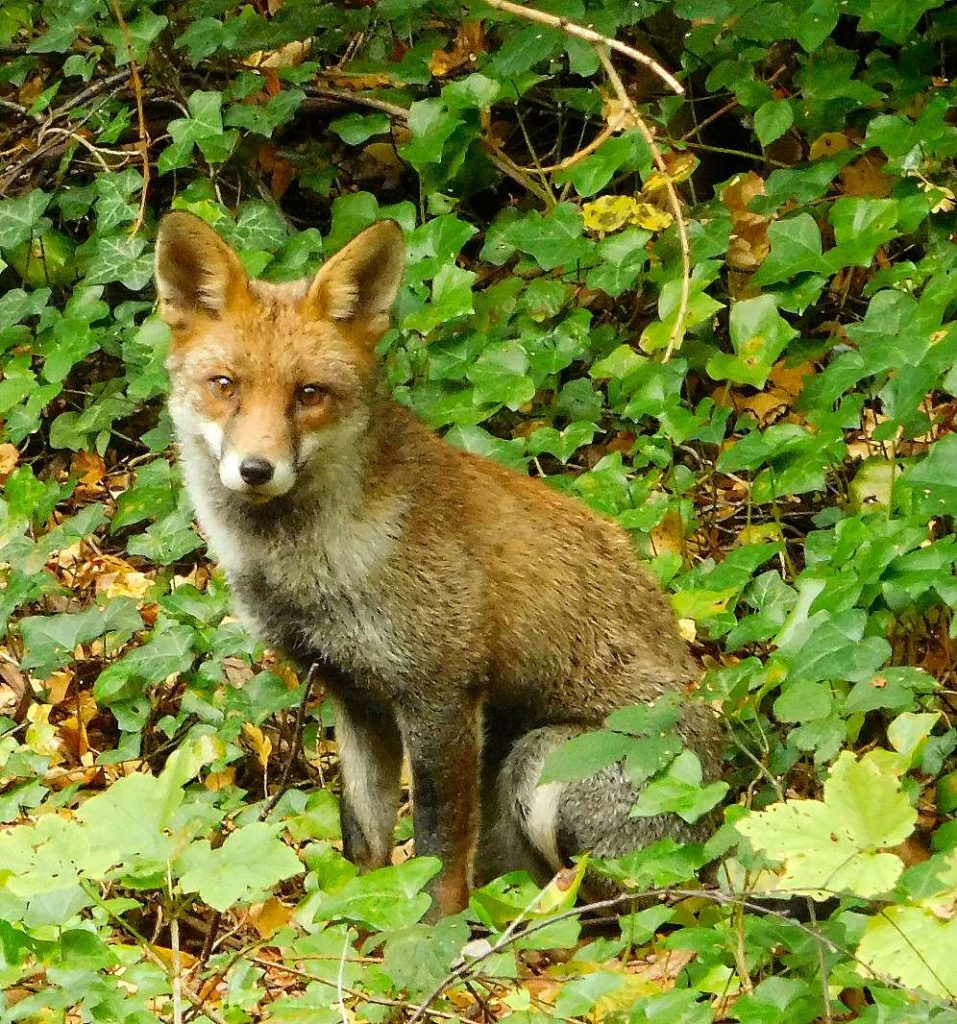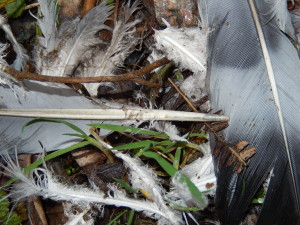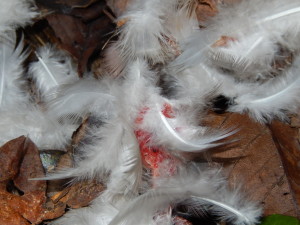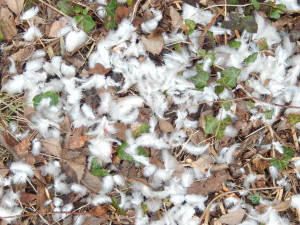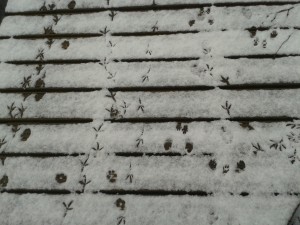Down at the reserve today, the first Skipper of the year, basking on a reed by the pond (with Azure and Large Red Damselflies too). It must be a Large Skipper from its size and pattern: uncommon in the reserve.
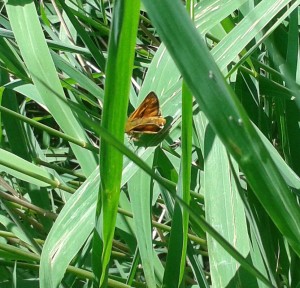
Up on the ramp, a Red Admiral; and this Ichneumon wasp, which looks very much like Gasteruption jaculator, a fine parasitoid with an ovipositor as long as her head, thorax and abdomen together. She was inside the hut trying to escape through the window; she is black all over, except for the front of her abdomen which is red, and the tip of her ovipositor, which is white. Her wings are nearly transparent with a hint of brown.

We spent the morning fixing path edgings – poles of elm, with handmade wooden pegs, sharpened to stakes. A foreign couple came along and asked if we were preparing for Vampires: perhaps they were from Transylvania, who knows.
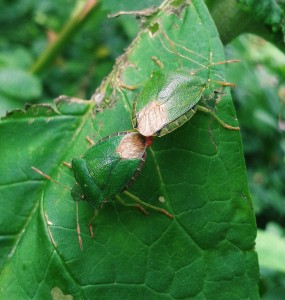
In the afternoon we repaired the gaps in the fence where vandals have started jumping over and running down the bank. We hammered in an enormous metpost with a tall square oak post – we had to bring the stepladder to reach the top to drive it in with the round post-hammer – and we had to shave off the edges so the hammer fitted over the post! Then we twisted wire supports and barbed wire to repair the gaps, and hammered extra-large staples into the posts to fix the wire. It was hot and hard work but we’ve fixed a definite problem. Happily the rest of the fence has become totally overgrown with brambles and bindweed, with leafy branches reaching down to it, so it seems unlikely anyone will climb over it there.

